The result was the Consolidated PBY Catalina.
Why Name It Catalina?
The U.S. Navy also adopted the Catalina name in October 1941.
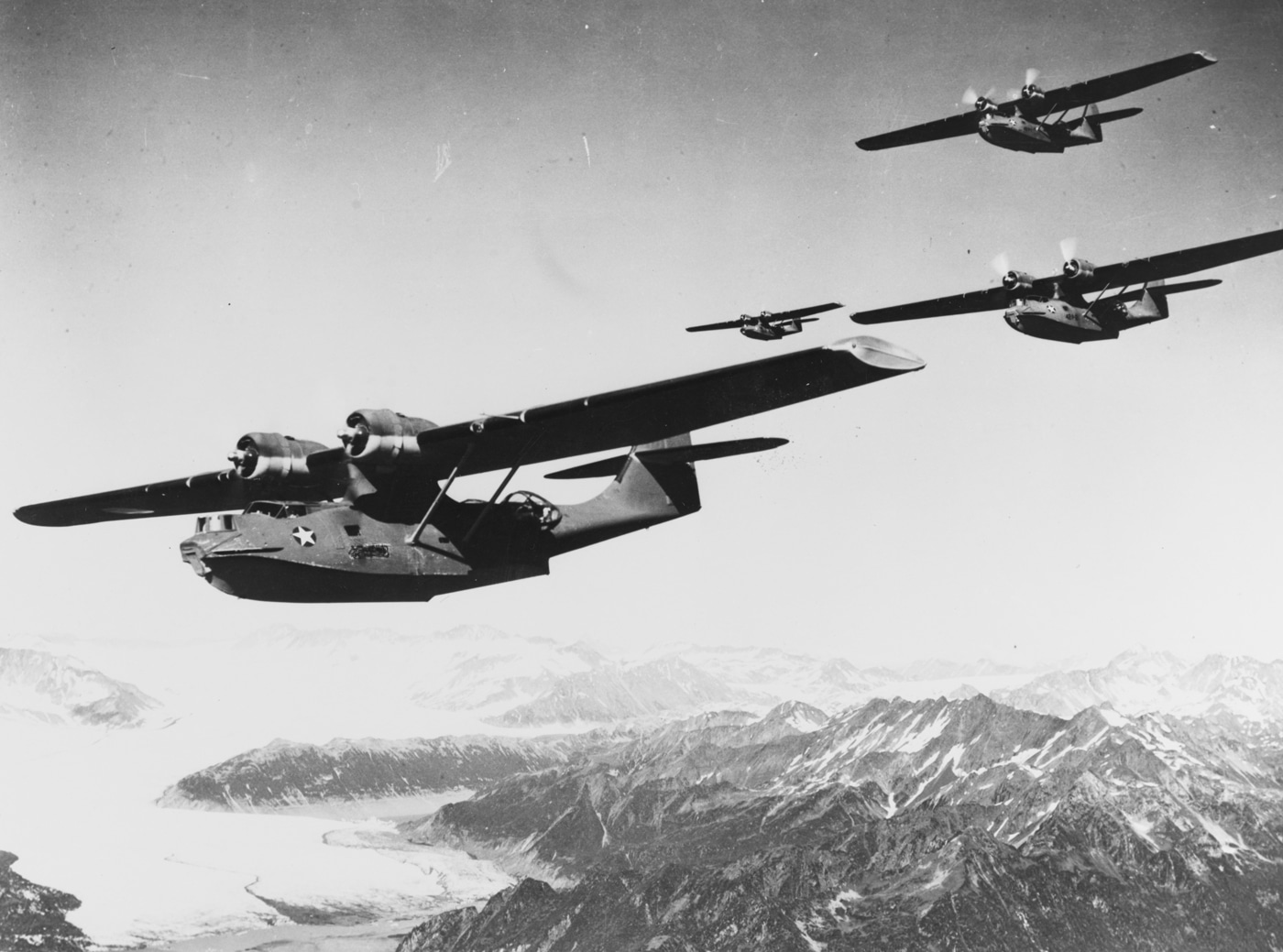
Consolidated PBY-5 Catalina patrol bombers in flight over a glacier on the Alaskan coast, circa 1941. The planes are the Sea Demons from Patrol Squadron 22 (VP-42). Image: U.S. Navy
Laddon had a success rate that was hard to match.
Within a year, he designed Consolidateds first seaplane, the Admiral XPY-1 Flying Boat.
Then, he moved on to the Catalina.
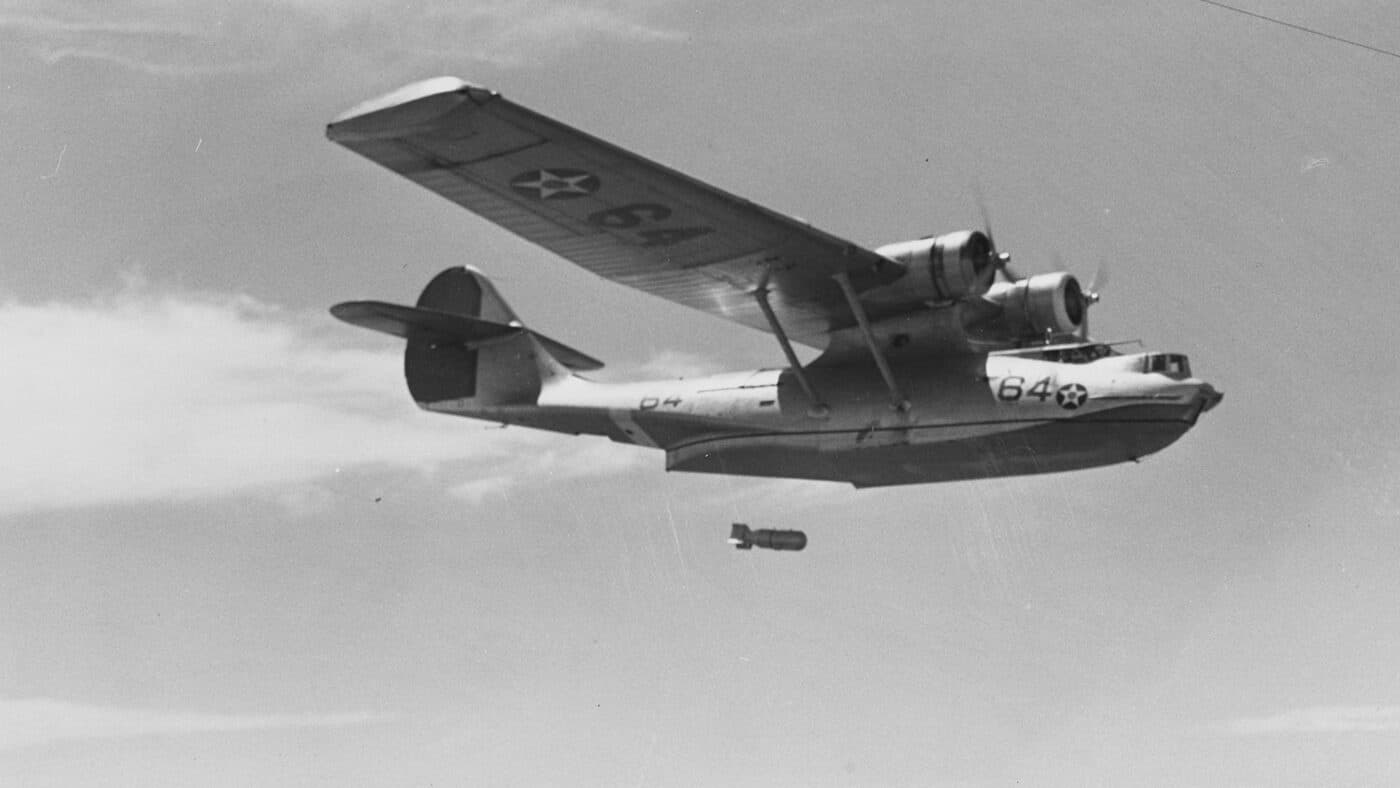
A PBY-4 Catalina drops a bomb during a training flight in 1942. The plane’s insignia has the interwar period red dot in the center of the star. Image: U.S. Navy
six turning and four burning.
The wingtip stabilizing floats were retractable in flight for better aerodynamics.
It was constructed using stressed skin aluminum sheets riveted to an aluminum frame.
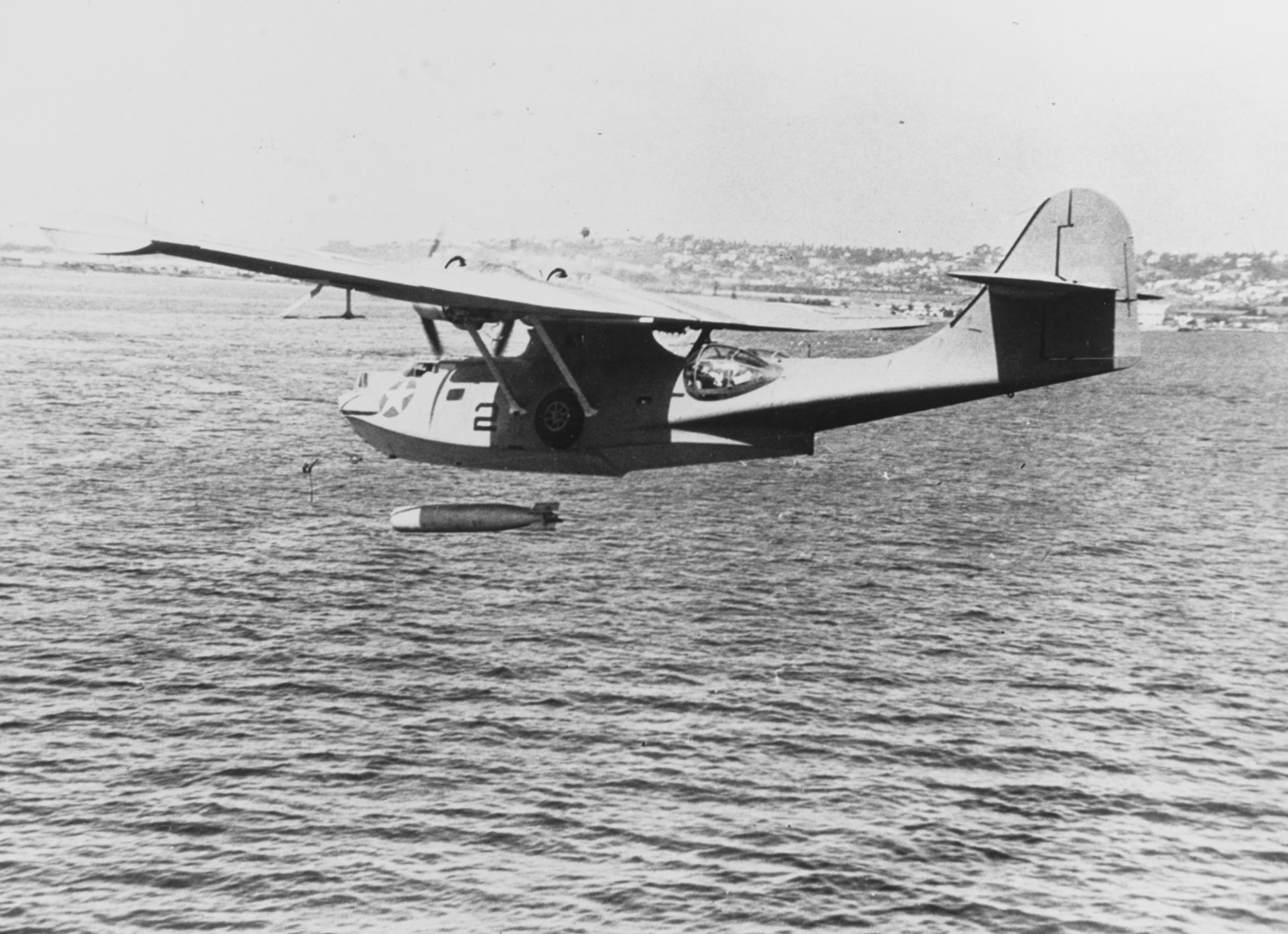
A Consolidated PBY-5A Catalina patrol bomber Drops a Mark 13 torpedo during testing. The Mark 13 was the most common aerial torpedo used by the United States Navy in World War II. Image: U.S. Navy
It was powered by two 825 horsepower Pratt & Whitney R-1830-58 Twin Wasp motors.
These motors would be upgraded and powered the Catalina throughout its production run.
Two were mounted in the nose turret, and one in a ventral hatch at the tail.
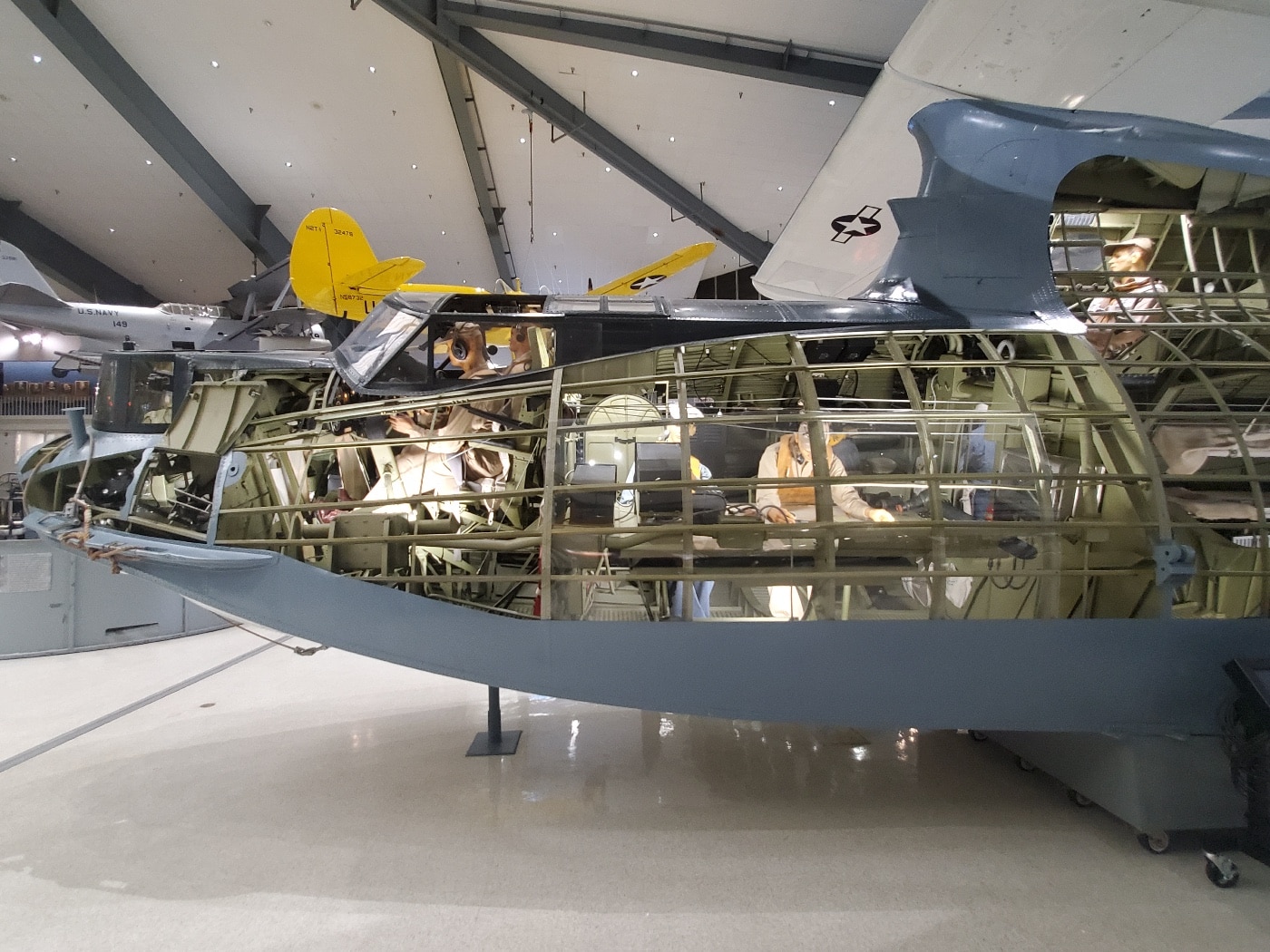
This PBY Catalina at NAS Pensacola has a cutaway showing the crew work areas. The PBY had less room than the larger PBM flying boats. Image: Author
It was also equipped with flotation lights that were used to mark targets or locations of downed airmen.
Birchalls radio man messaged the Eastern Fleet stationed in Ceylon, warning of an imminent attack.
The remaining six were captured by the destroyer Isokaze and became P.O.W.s.
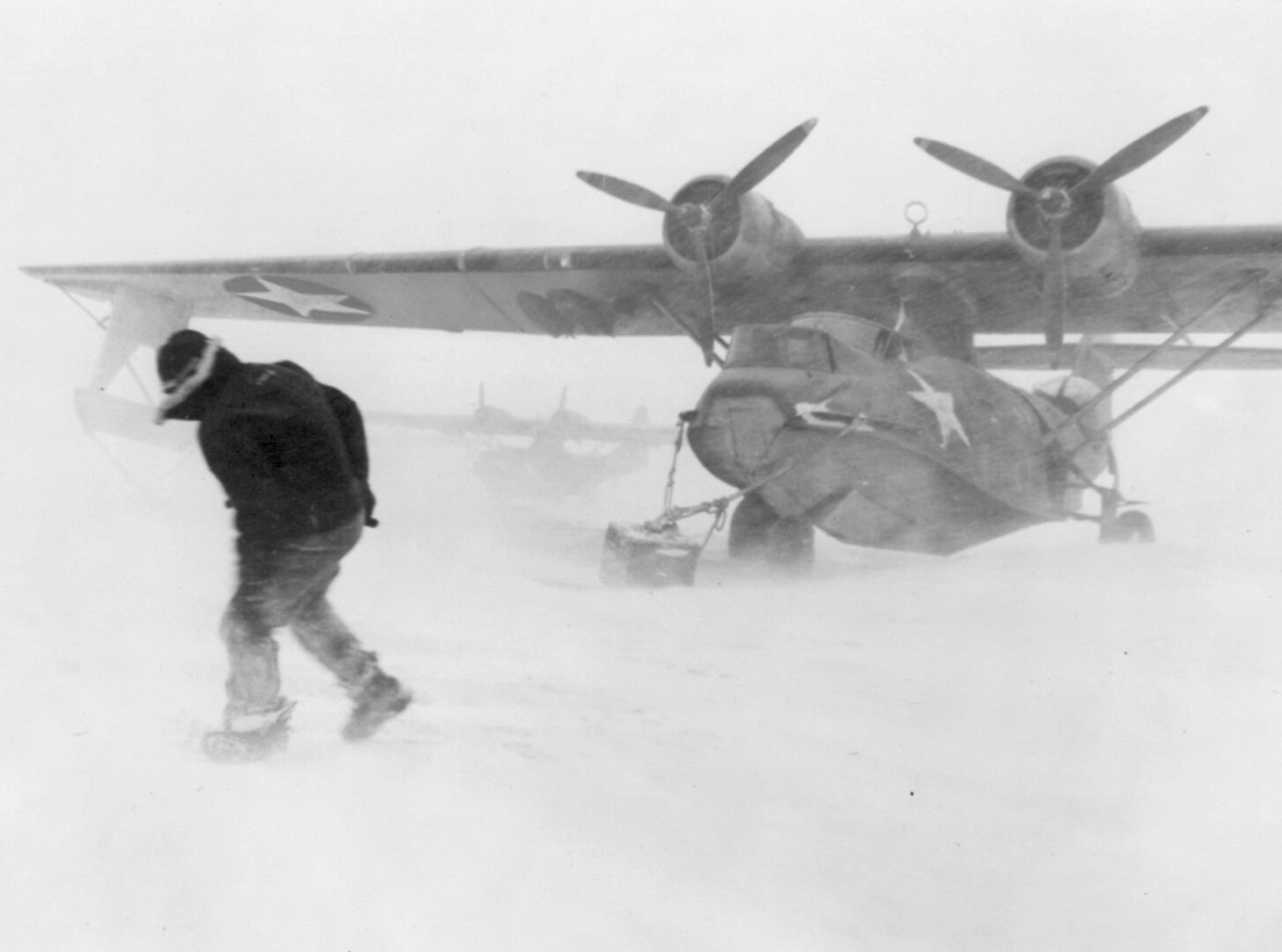
A 60-knot wind blows around parked Catalinas during snow storm on Adak Island, Alaska. Foul weather prevented the Japanese from invading Adak Island during the Aleutian Islands campaign. Image: Library of Congress
Birchall was dubbed the Saviour of Ceylon.
Although wounded, Cruickshank attacked and sank the U-Boat on his second pass.
He was awarded the Victoria Cross for his courage under fire.
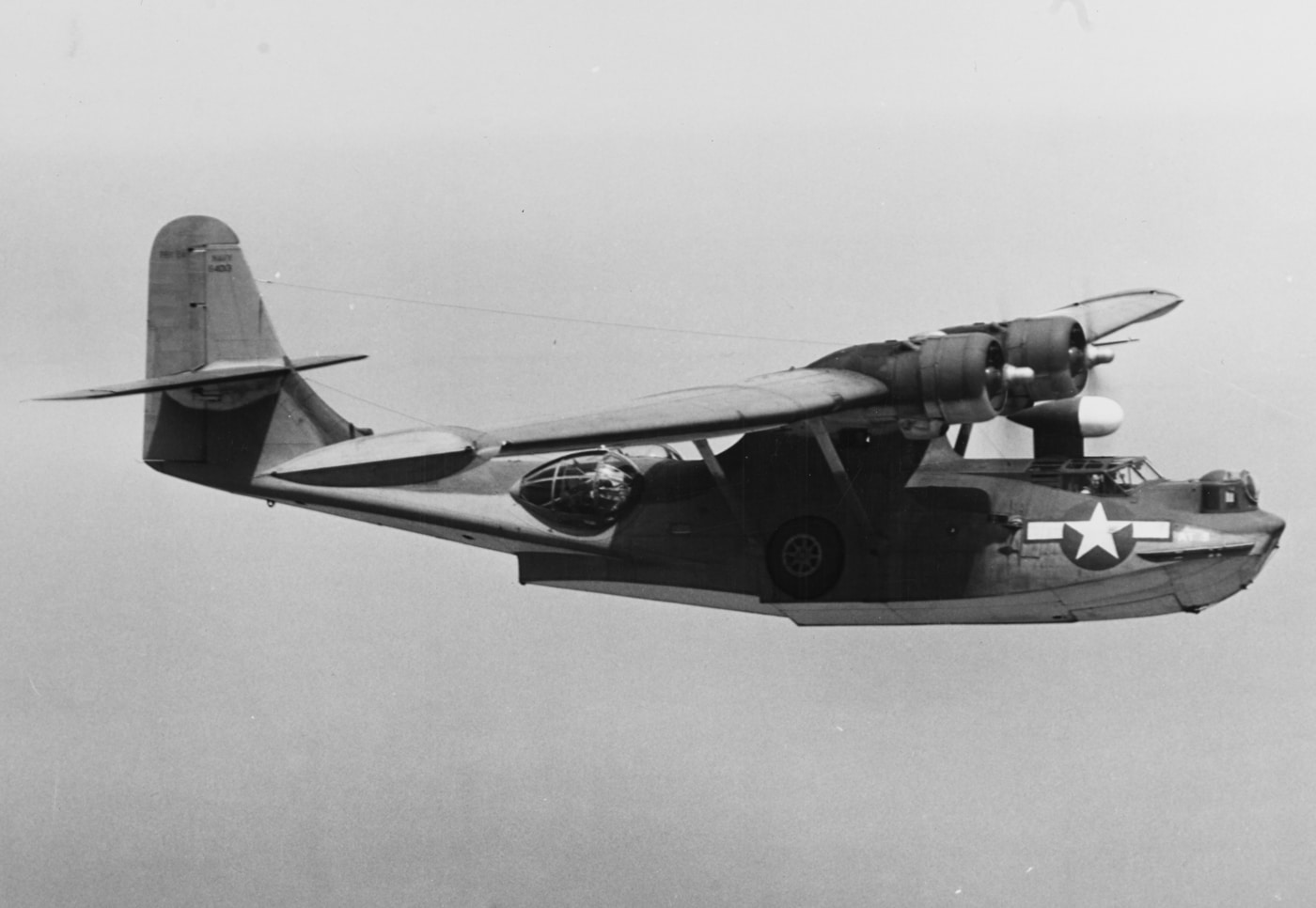
A Consolidated PBY-6A Catalina in flight near Naval Air Station Patuxent River, Maryland, in June 1947. Image: U.S. Navy
Regardless of nationality, Catalina aircrews were known to be a bit different.
RAAF, as well as U.S. Navy crews, employed unique tactics in the Pacific while terrorizing Japanese bases.
They would return to base the same night to avoid interception in the daylight.
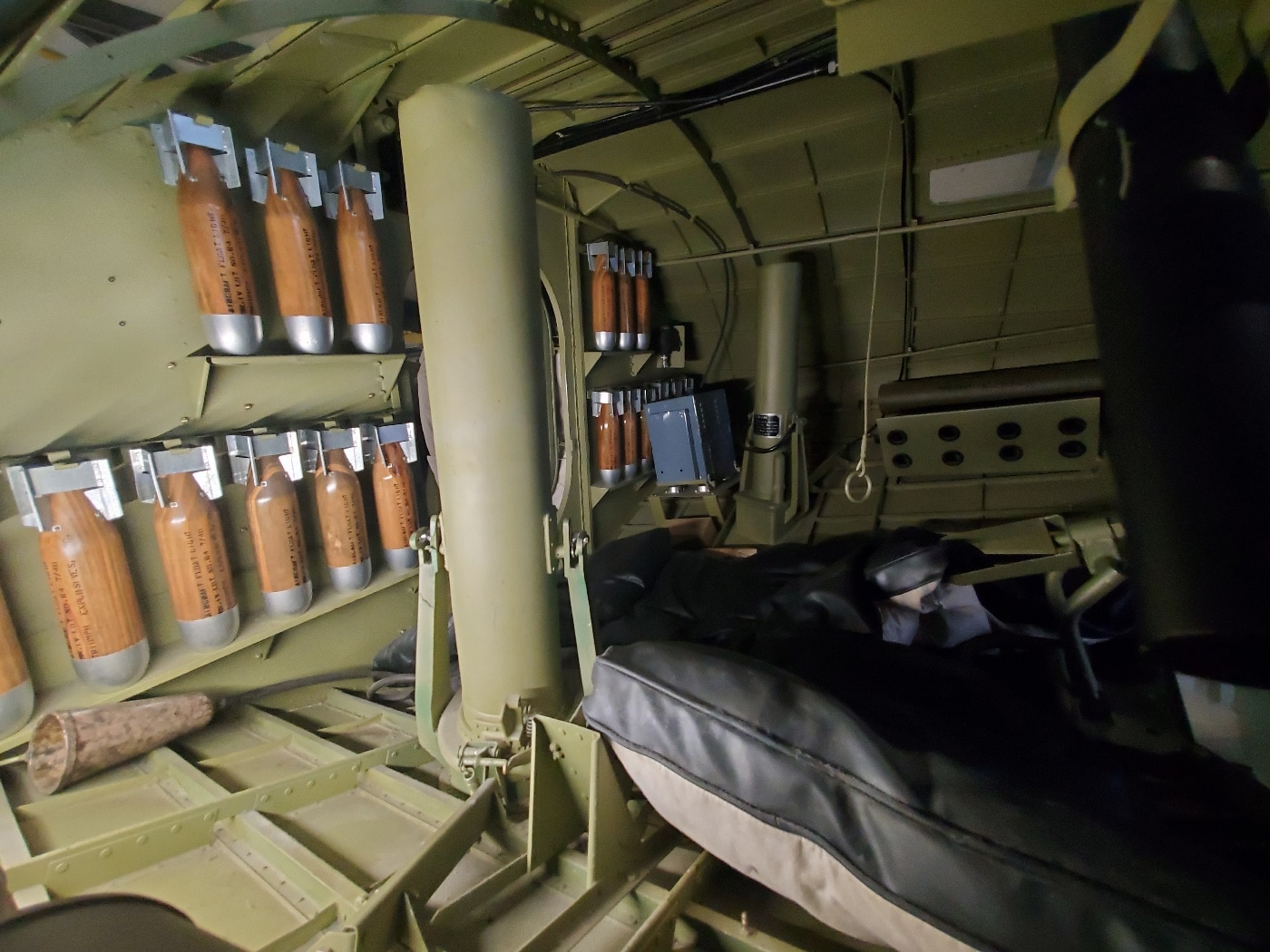
Shown here is a rack of flotation lights used by PBY crews to mark the position of a submarine or people in need of rescue. Image: Author
Whether it was the best isnt nearly as important as what it accomplished.
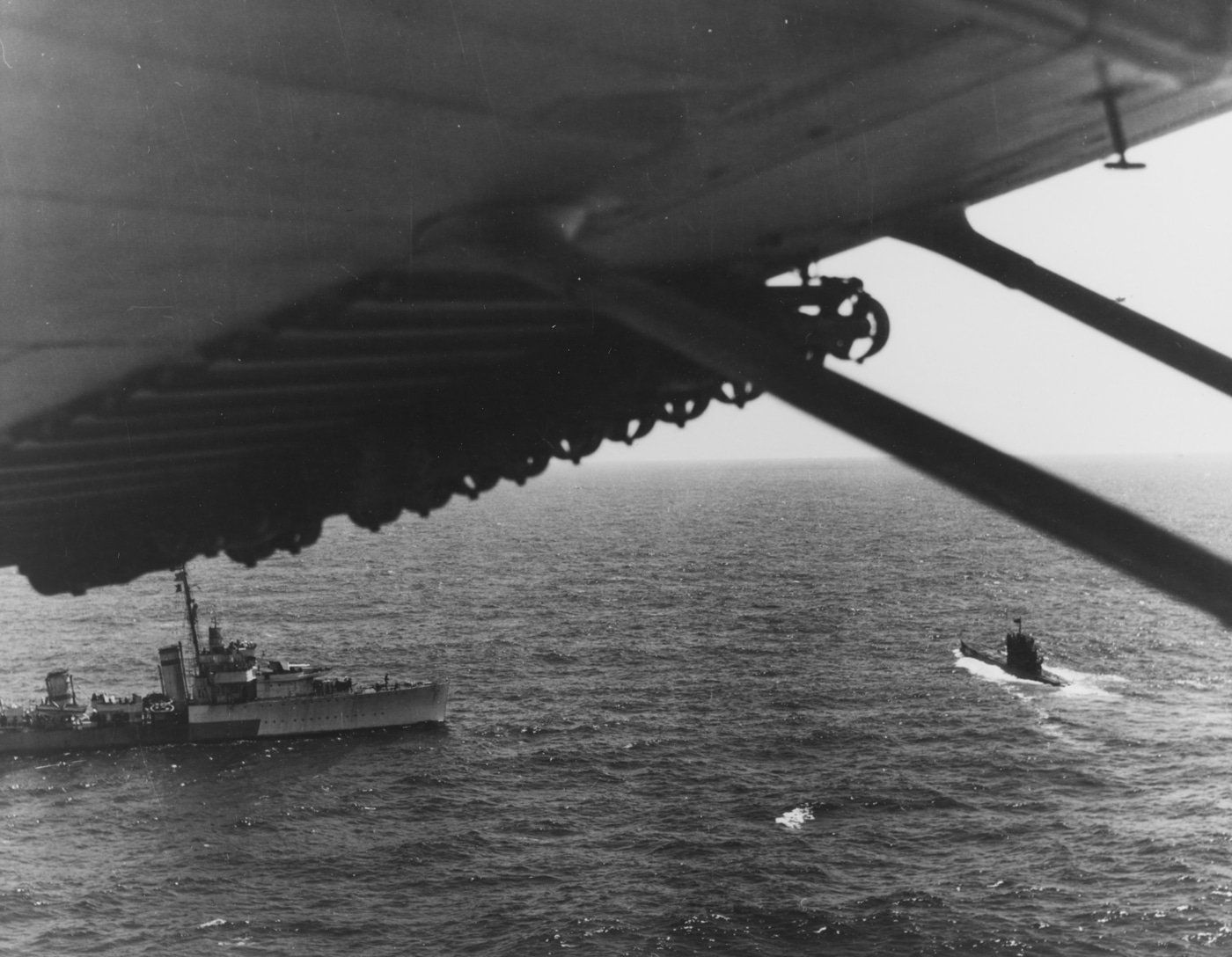
HMS Malcolm (D19) receives the surrender of German submarine U-541 in the Atlantic Ocean. Visible are anti-submarine rockets under the PBY’s wing. They were mounted to fire backwards. Image: U.S. Navy
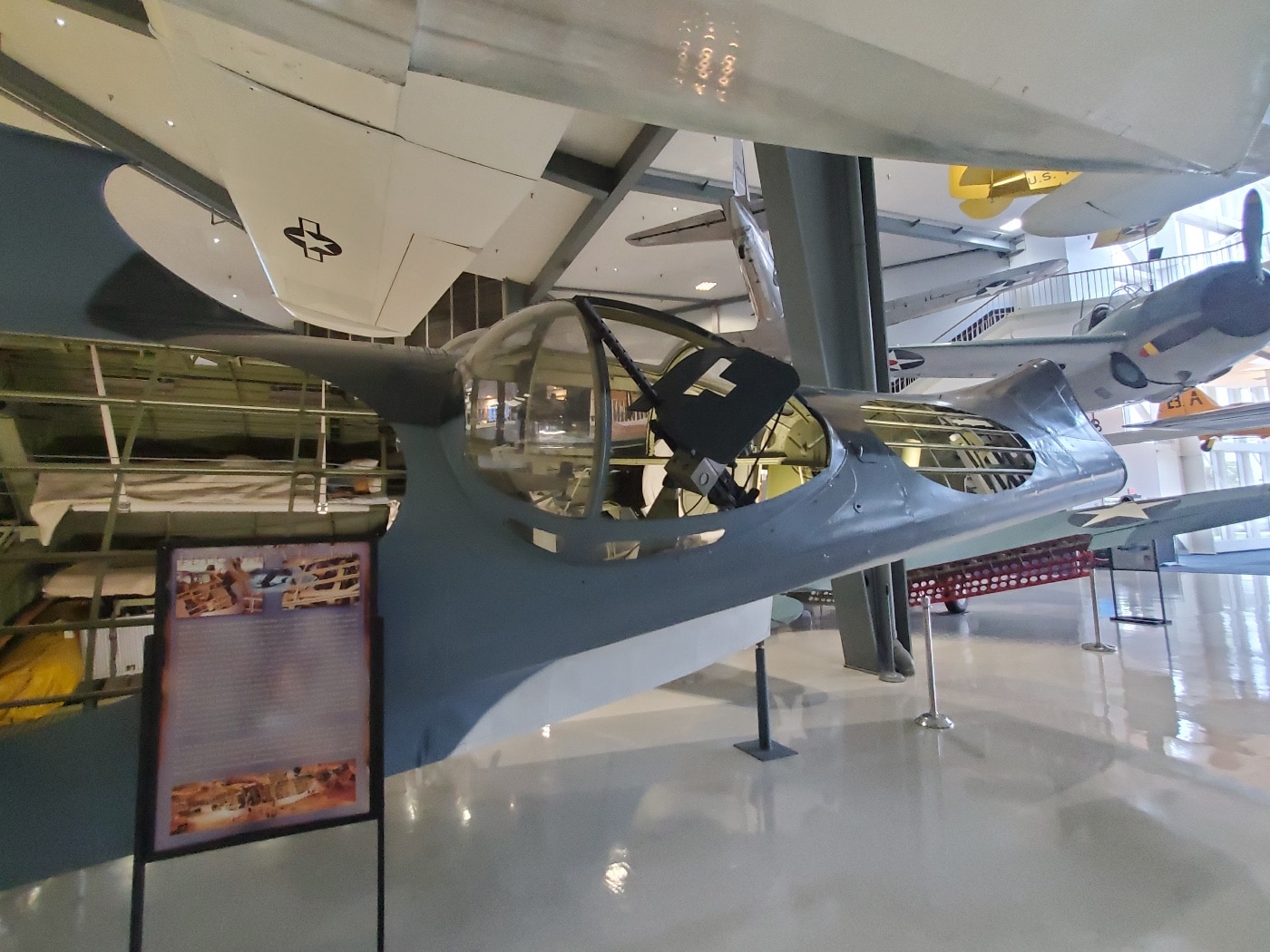
Located at NAS Pensacola, this PBY Catalina display shows the machine gun in the port blister. Image: Author
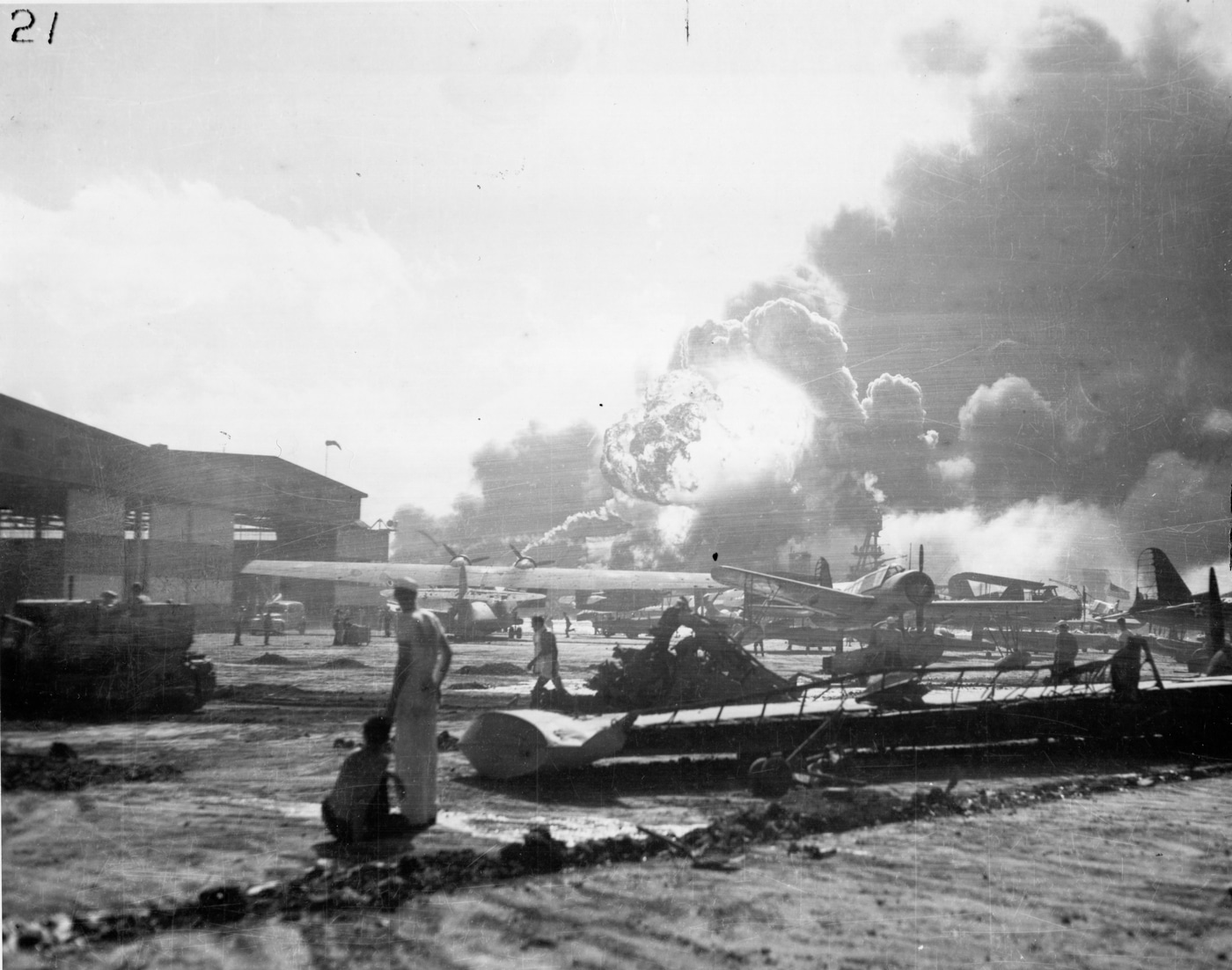
At the Ford Island seaplane base, sailors see the USSShaw(DD-373) explode at Pearl Harbor on December 7, 1941. The wrecked wing in the foreground is from a PBY hit by Japanese planes. Image: U.S. Navy
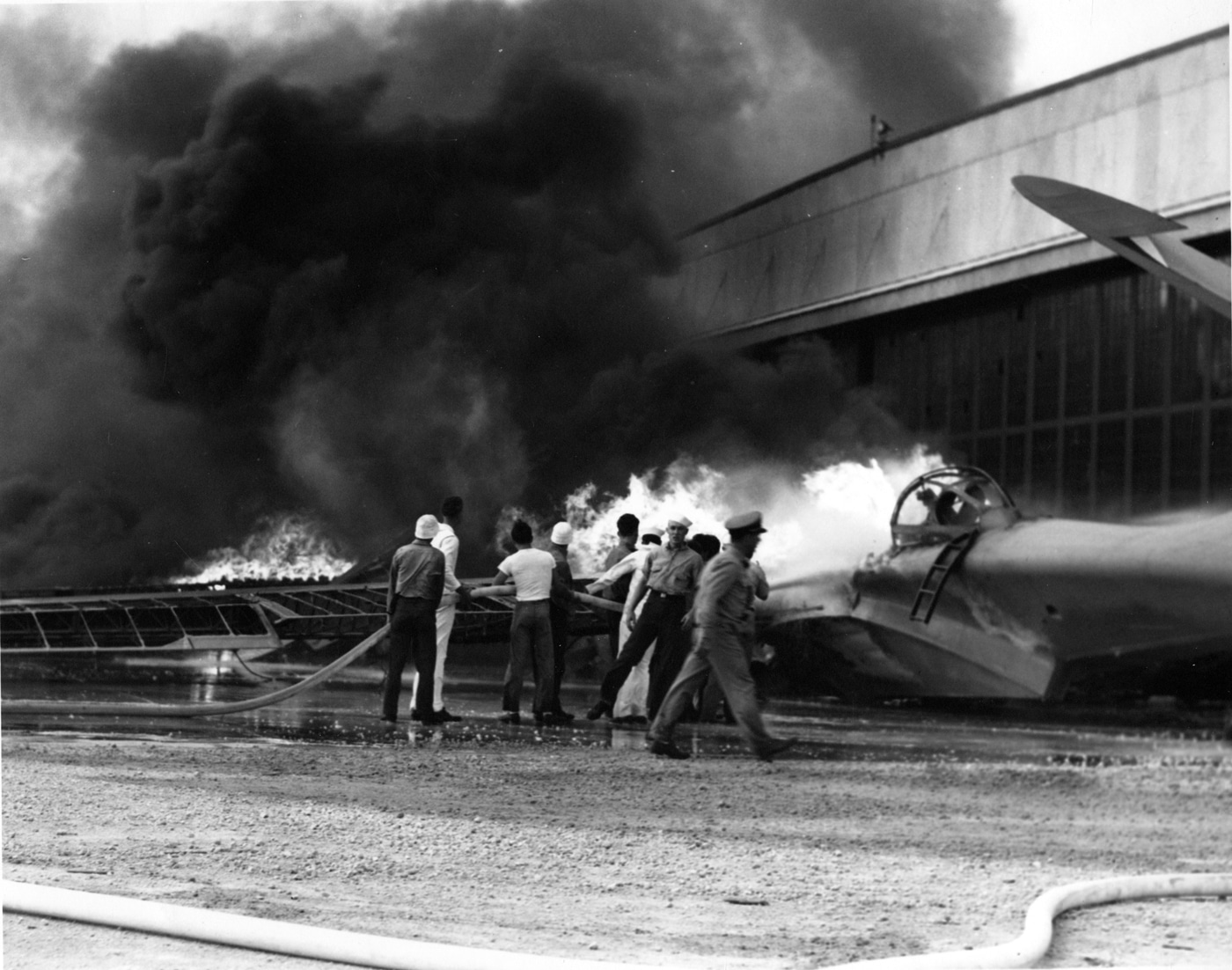
A PBY patrol bomber of VPB-11 burns at NAS Kaneohe during the Japanese attack at Pearl Harbor. 27 of 36 PBYs were destroyed. Sailors grabbed machine guns from the burning planes and fought back. Image: U.S. Navy
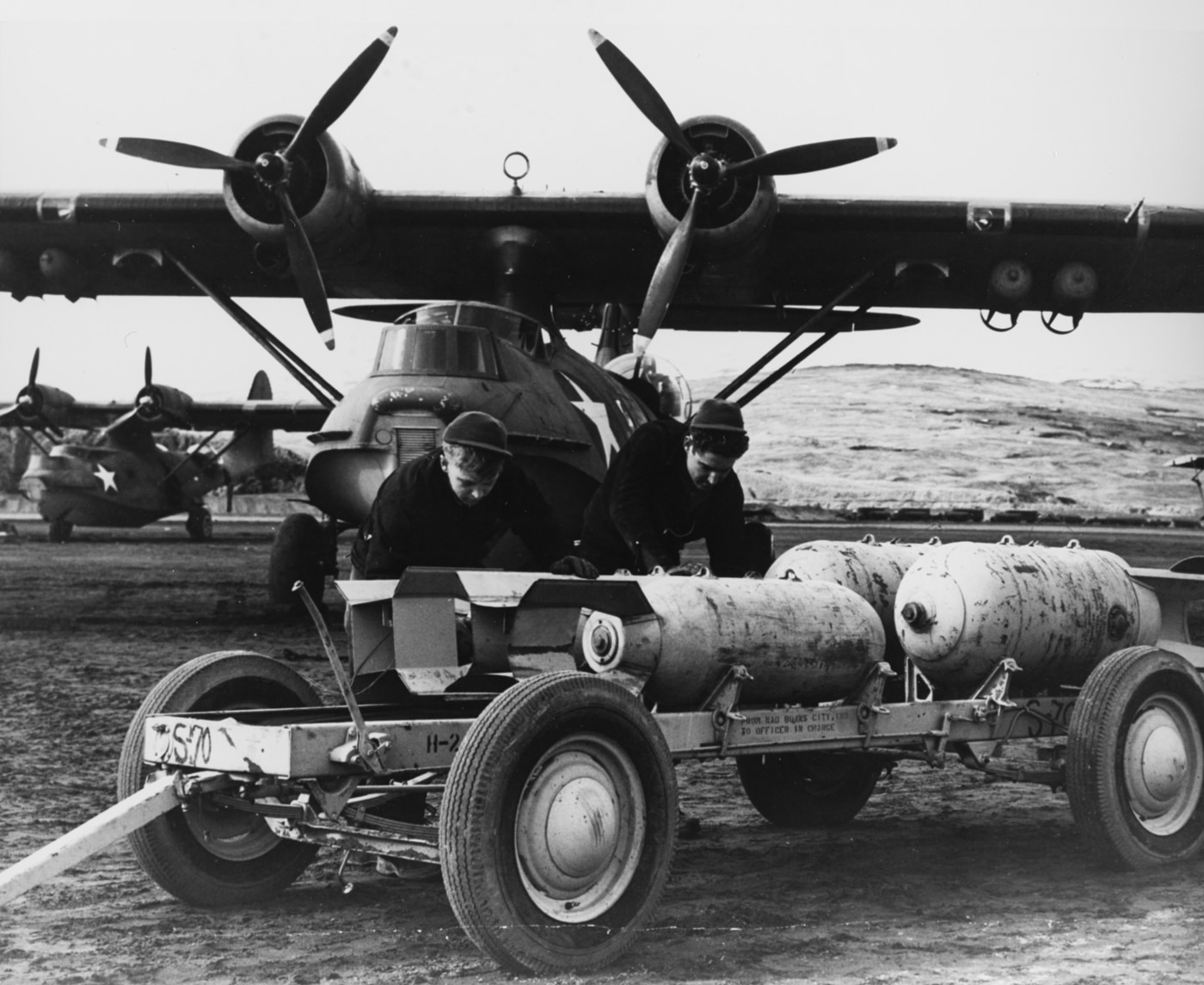
Mark 37 depth bombs being prepared for loading onto PBY-5A patrol bombers in the Aleutian Islands. Image: U.S. Navy
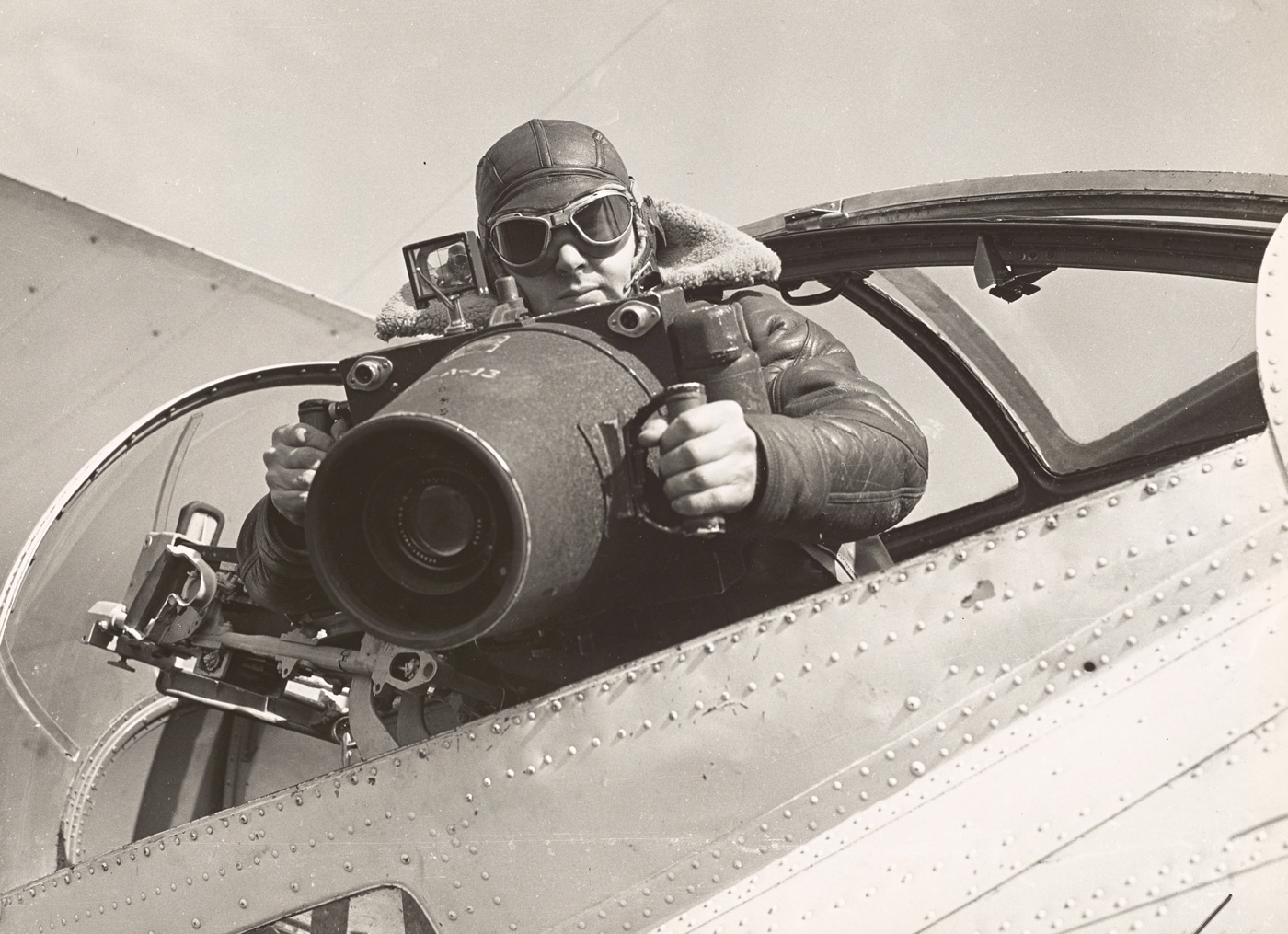
Coast Guard Combat Photographer Eldon C. Ashcroft demonstrates how to shoot a reconnaissance photo from the blister of a PBY while serving on the Greenland Patrol. Image: NARA
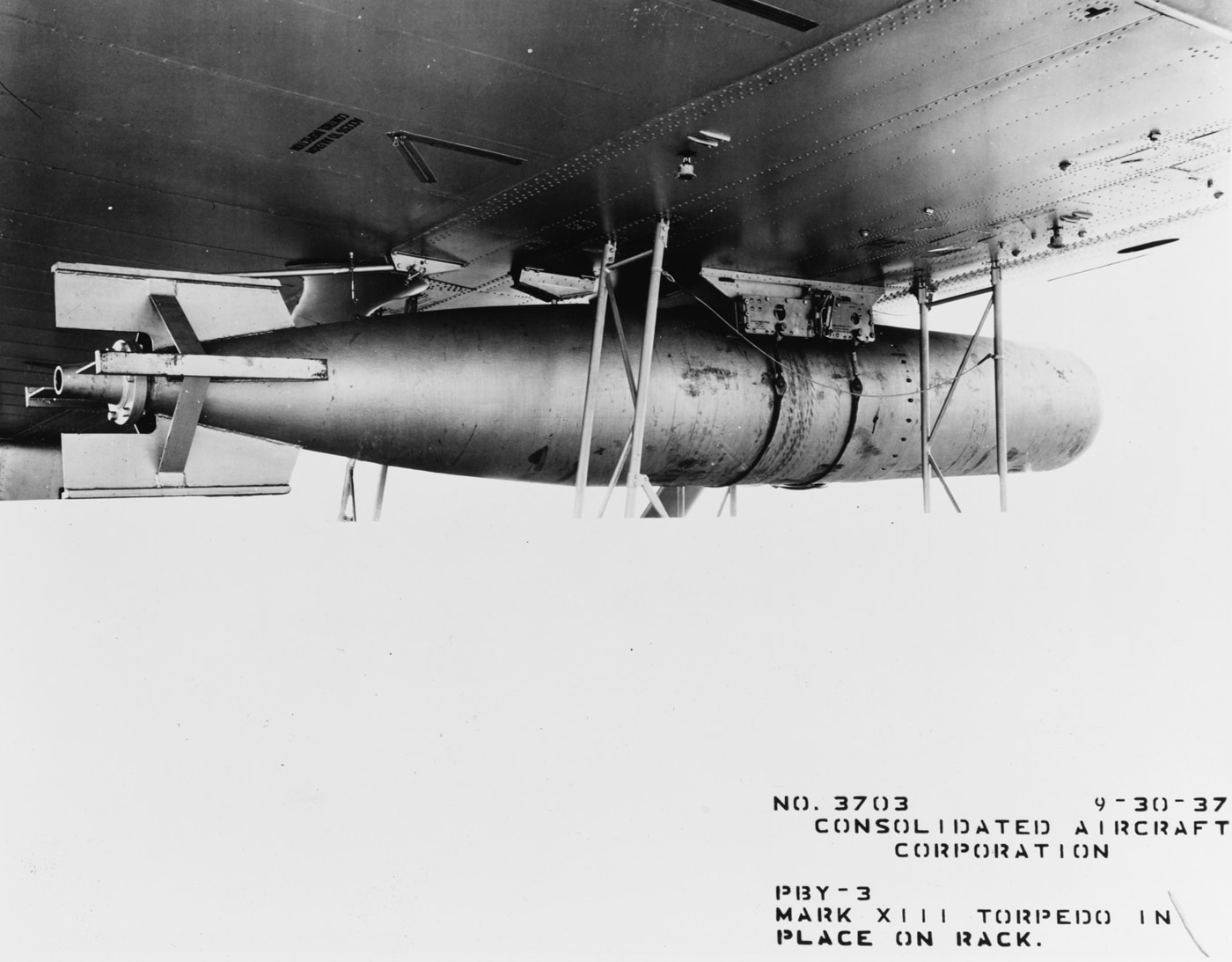
A Mk. XIII torpedo (without propellers) installed on a PBY’s underwing racks. Image: U.S. Navy

Crew of the Patrol Squadron 44 (VP-44) PBY-5A Catalina patrol bomber that found the approaching Japanese fleet’s Midway Occupation Force on the morning of June 3, 1942. Image: U.S. Navy
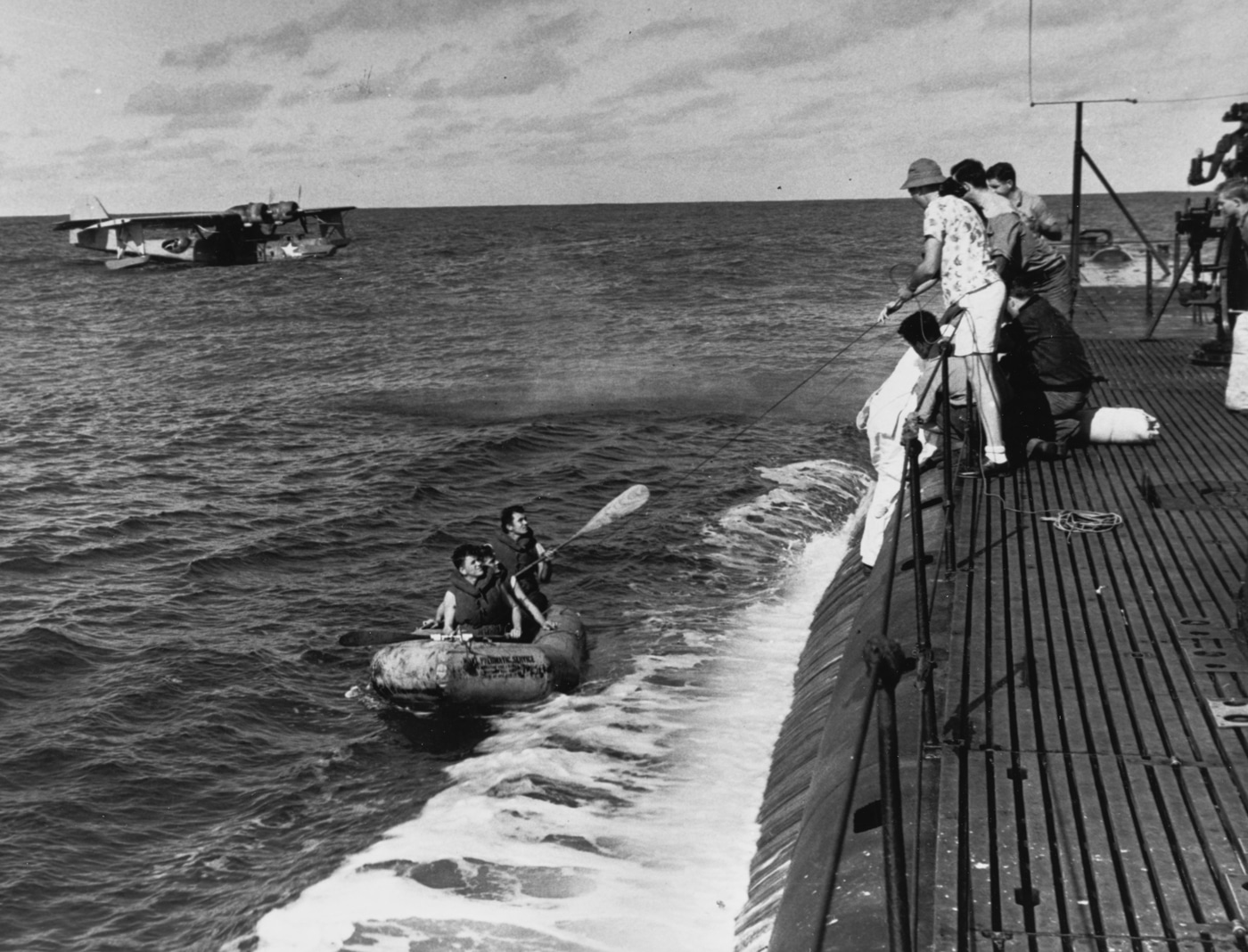
USSHaddock(SS-231), aGato-class submarine, transfers one of its sailors, an appendectomy patient, to a waiting PBY-5A to be flown to Midway Island for hospitalization. Image: U.S. Navy
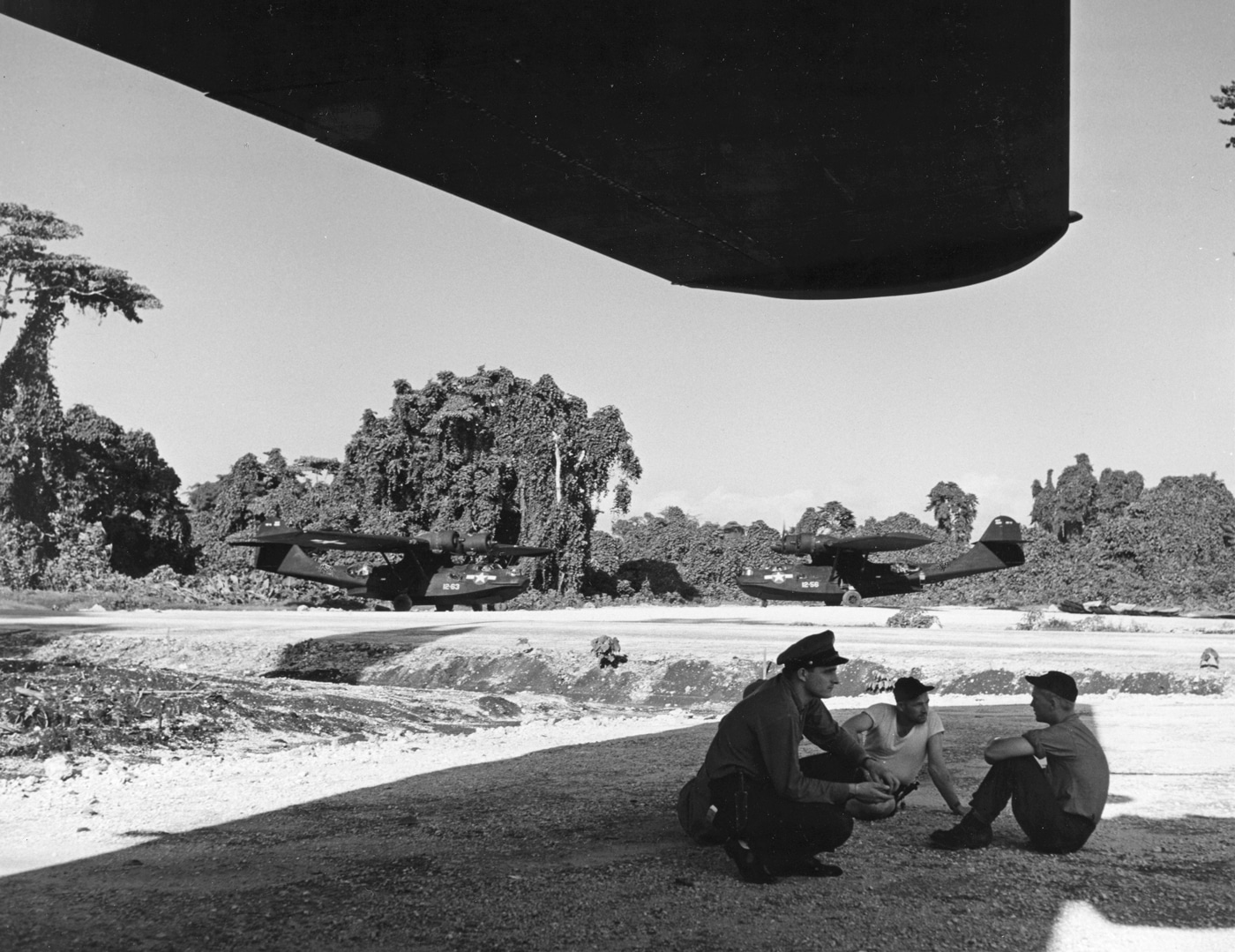
Dark-painted Catalinas prowled the night skies of the Pacific on search and bombing missions. Known as “Black Cats,” there were a number of these Catalina squadrons on duty in the Pacific. Image: U.S. Navy
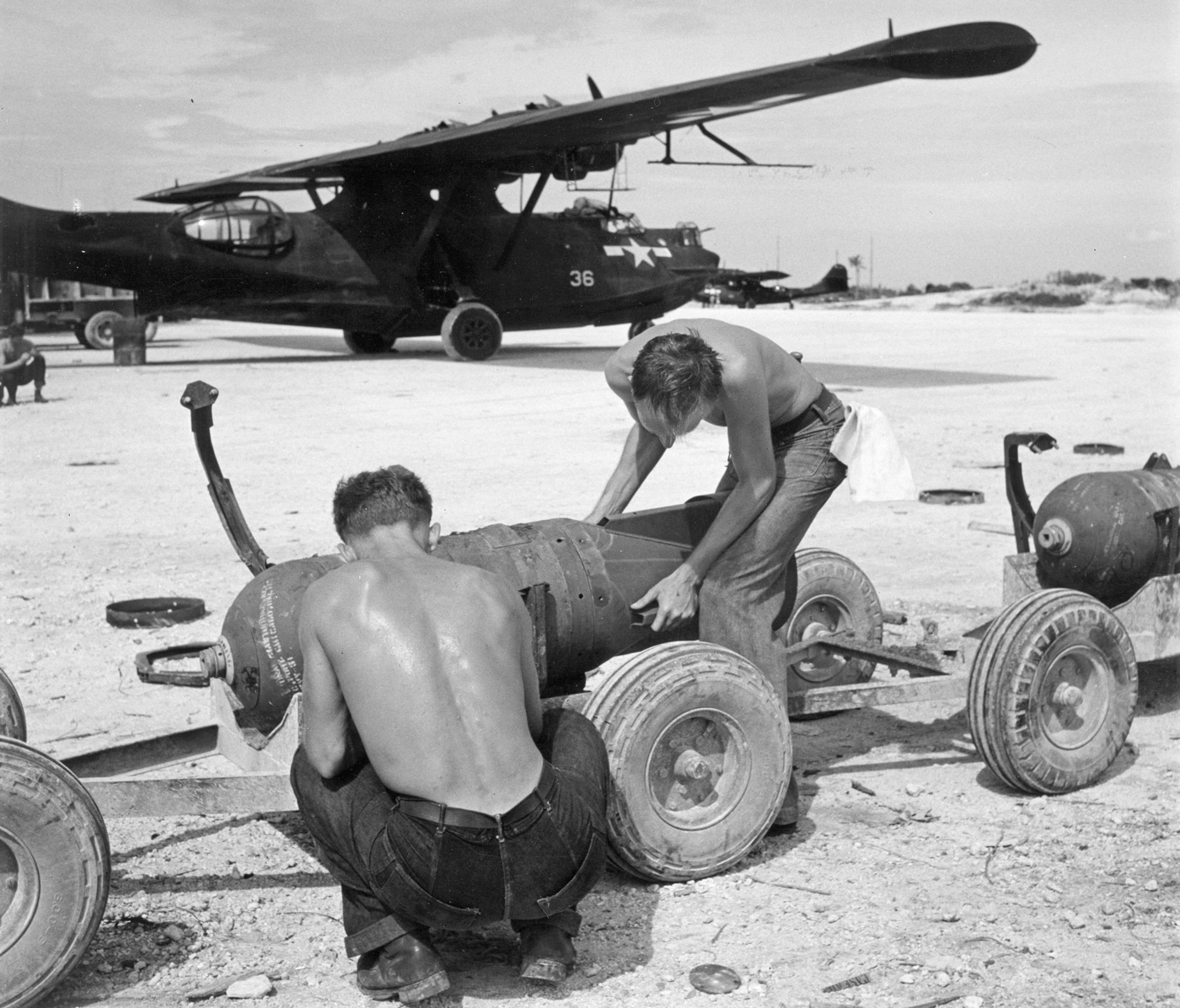
Enlisted men place bombs aboard dollies for the short ride over to waiting PBY Catalinas of a Black Cat squadron. Image: U.S. Navy
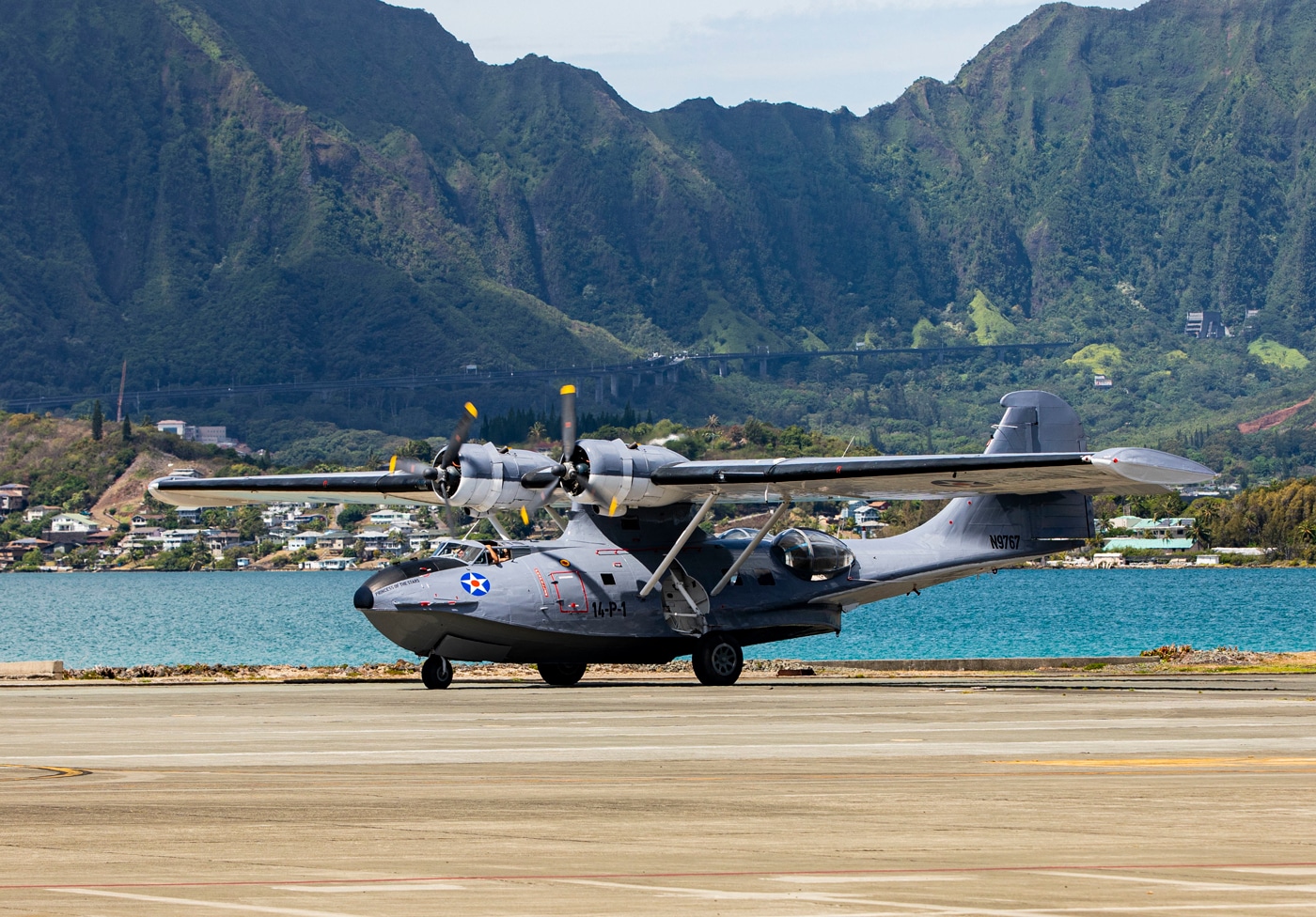
The “Princess of the Stars” lands at Marine Corps Air Station Kaneohe Bay to offload a team of Navy EOD divers who searched for a submerged PBY Catalina that was lost during the attack on Pearl Harbor. Image: U.S. Marine Corps




